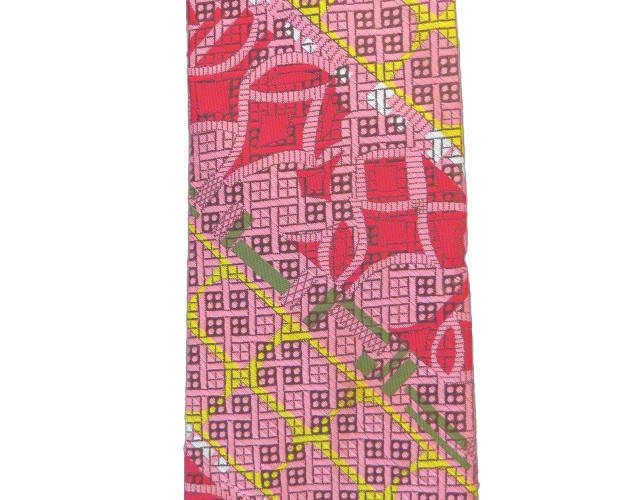New Found Old Textures
- Invitation

- Oct 4
- 4 min read
Mississippi State University’s fashion program preserves the past in its Historic Costume and Textiles Collection.

Written by Emily Welly | Photographed by Joe Worthem | Photos Contributed by Mississippi State University
The Historic Costume and Textiles Collection at Mississippi State University is on the verge of a rebirth.
Managed by the Fashion Design and Merchandising department in MSU’s School of Human Sciences since it was established in the mid-1980s, the collection of clothing is vast.
“We have thousands of things,” said Dr. Jessica Pattison, assistant professor of fashion design and product development, who is in her second year teaching at MSU. She is also the director of the collection and is leading the effort to reimagine it.
“I’m just now opening the lid of the box to really unearth this collection and get more people to see it,” she said.
There is boutique ready-to-wear Chanel, cool 1980s-90s work wear and ballerina cocktail ball dresses from the 1950s. There are also tuxedos from late 19th century and a silk top hat for men; bustles from the mid- to latter-1800s (one with burgundy moire silk and one with a cuirass bodice). There are even examples of traditional Korean hanbok, or clothing. And there are accessories: handbags, hats, collars and cuffs.
There are also textiles, including unique examples of Trapunto quilting and sewing and numerous batik quilts.
The goal is for the collection to reflect all of Mississippi’s past and tell the stories of its people and culture.
“Representation matters,” Pattison said. “What did this place look like hundreds and thousands of years ago?”
To reflect that, Pattison says the collection must include not only designer dresses but also men’s and children’s clothing, historic athletic uniforms, traditional Native American dress, and garments like farm coveralls, vintage denim and leather chaps that reflect Mississippi’s agricultural and farming influences, equestrian history and railroad life.
The collection is part of what drew Pattison to this job.
“One of most pleasant surprises was realizing the untapped resource of the collection here,” she said. “It was the cherry on top.”
She previously taught at Virginia Tech, where she also worked with a historic costume collection, as well as Radford University and Stevenson University in northwest Baltimore. She has a Ph.D. from LSU in textiles apparel design and merchandising, and she also has industry experience working for Lululemon and luxury brand Lafayette 148 in New York.
All along, she has been interested in historic costumes and clothing as a means to tell stories and convey what’s important from the history of a specific culture or place. Much of her teaching and research has been focused on sociocultural connections to fashion and self-reliance through agricultural biproducts including animal and plant fibers that are used for fabric and clothing.
“(Clothing) tells a lot about people, place and society, it can be a really valuable resource,”
she said.
Now in Mississippi, she says she is learning a lot from the history preserved in the collection at MSU and is excited for the possibilities for its future.
“Wow, I feel like I have never really taught this,” she said. “The students really made me realize the importance of the collection.”
Indeed, simply having these items is not the end goal: This is a teaching collection.
“The goal is not just conserve and preserve but expand into research connections,” she said.
For example, Pattison integrated the collection into a historic costume class for a fashion revival project. She plans to use it this year to teach principles of draping by using dresses in the collection. Students also use it to learn more about how garments are made and to examine hand-stitching techniques up close; textiles classes compare natural and synthetic materials and woven structures; visual merchandising students learn how to handle, care for and display historic artifacts.
Last spring, students presented an exhibit in Colvard Student Union about the power and presence of 1980s women’s work wear, and this month a student-created exhibit will focus on garments tied to the university and the state.
Pattison has big ideas for the future of the collection. She envisions a place people can drop in during the day to view items and conduct research, much like a primary resource library. She foresees a collections manager who is responsible for the day-to-day management of the items and the space.
She hopes to build an interdisciplinary team of people not only from MSU’s fashion program but from all over the university. Imagine a data science student cataloging items in a searchable database; a marketing student promoting the collection to different audiences; an agriculture and forestry student studying sustainable fibers used to make garments.
Pattison also envisions teaching others about managing and caring for a historic collection like this one.
“We want to be intraconnected in the university and also be able to invite outsiders to come use the collection,” she said.
In a first step to make all of this happen, this summer, the collection was moved out of Moore
Hall, which was not only difficult to access but also not environmentally sound for the artifacts. It is now temporarily housed in Rice Hall, and plans are in the works to move it to a more permanent home in coming years.
“We’re trying to find space to build and maintain the collection with integrity,” she said. “We want significance, meaning and people’s stories to be told.”
In addition to space, Pattison said, monetary resources are needed to help with the time-consuming tasks of processing donations as well as the supplies to do so, which includes freezing garments in the department’s 18-cubic-foot deep freezer, vacuum sealing them for preservation and packing them in acid-free boxes and paper.
“This collection is incredible,” Pattison said. “I don’t want this to be a resource that gets lost.”

































Comments